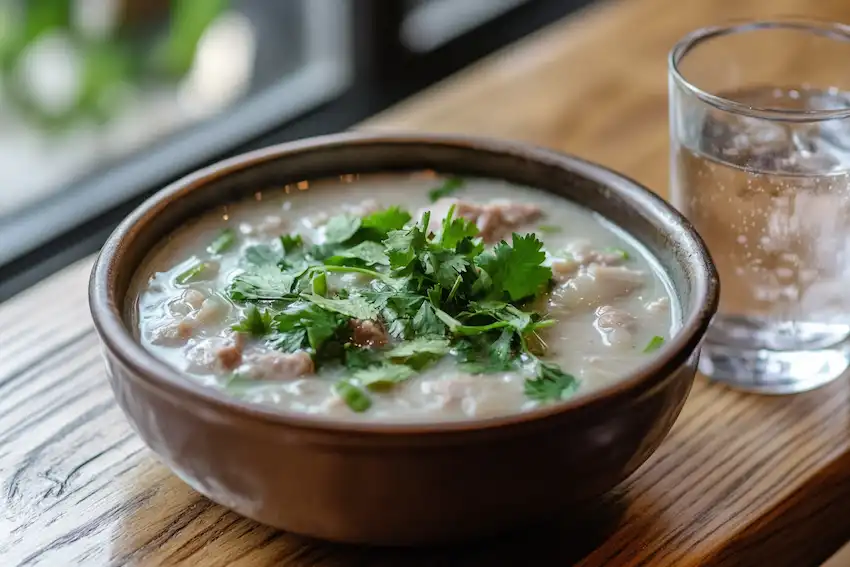Taro (Colocasia esculenta): A Powerful Ally for Colon and Digestive Health
Taro root (Colocasia esculenta) is a nutrient-dense root vegetable cherished in cuisines around the globe. Known for its rich, starchy texture, taro is celebrated for its versatility and substantial health benefits. But beyond its culinary appeal, taro offers remarkable advantages for digestive health, particularly for the colon. Here’s why taro is beneficial for your gut and the best ways to incorporate it into your diet for optimal health.

For more on the power of this root, check out taro (Colocasia esculenta): the power of its root and beyond.
Why Taro Root is Excellent for Digestive and Colon Health
High in Dietary Fiber
Taro root is naturally rich in dietary fiber, a vital nutrient that promotes a healthy digestive system. Fiber adds bulk to stool, aiding its movement through the intestines and reducing constipation risk. Regular consumption of fiber-rich foods like taro supports efficient digestion and waste elimination, both essential for colon health.
Supports a Balanced Gut Microbiome
Taro root’s fiber acts as a prebiotic, feeding beneficial gut bacteria. A balanced microbiome is essential for effective digestion and nutrient absorption, and it plays a key role in immune health. Taro’s prebiotic effects help maintain this balance, supporting gut health and overall wellness.
May Lower Colon Cancer Risk

A high-fiber diet is linked to a reduced risk of colon cancer. The fiber in taro not only facilitates waste removal but also absorbs potential toxins in the digestive tract, limiting their time in the colon. This reduces inflammation and the risk of harmful cell development, making taro a valuable food for long-term colon health.
Promotes Regular Bowel Movements
For those with irregular bowel movements, taro is an excellent dietary addition. Its fiber and water content help soften stools and stimulate peristaltic motion, easing waste passage. This can prevent issues like hemorrhoids and diverticulitis, which often result from straining during bowel movements.
Best Ways to Use Taro Root for Digestive Health
Incorporating taro into your diet is simple, but it’s essential to prepare it properly to fully enjoy its digestive health benefits.
1. Boiled Taro
Boiling is one of the healthiest ways to enjoy taro, as it retains the fiber and nutrients that support digestion.
How to Prepare:
- Peel the taro and cut it into chunks.
- Boil the chunks for about 20-30 minutes until they’re soft.
- Drain, season with a pinch of salt, or drizzle with olive oil.
Boiled taro is easy to digest and preserves nutrients essential for colon health.
2. Taro Soup
A warm, creamy taro soup is soothing for the stomach and promotes healthy digestion.
Recipe:
- Boil chopped taro, carrots, onions, and garlic.
- Blend the mixture into a creamy consistency.
- Season with salt, pepper, and your choice of herbs.
Enjoy this soup regularly to enhance digestion and promote bowel regularity.
3. Mashed Taro
Mashed taro is a nutritious alternative to mashed potatoes, especially for those looking for a lower-glycemic option.
How to Make:
- Boil peeled taro root until it’s soft.
- Mash with a fork, adding a bit of butter or olive oil.
This creamy side dish is fiber-rich, filling, and gentle on the stomach, making it a great addition to any meal.
4. Taro Smoothie
For a quick way to enjoy taro, add it to a smoothie. This is perfect for a nutrient-packed boost.
Recipe:
- Peel and chop a small piece of taro.
- Blend it with banana, spinach, and almond milk.
- Add honey or maple syrup for sweetness if desired.
This smoothie provides fiber and acts as a prebiotic boost, supporting gut health and overall colon function.
Tips for Safe Taro Consumption
- Cook Thoroughly: Taro contains calcium oxalate, which can cause irritation if eaten raw. Thorough cooking reduces this compound, making it safer to eat.
- Practice Moderation: Taro’s high fiber content is beneficial but can cause bloating or gas if consumed in excess. Start with small portions and gradually increase.
- Stay Hydrated: Fiber absorbs water, so it’s essential to drink plenty of water when eating high-fiber foods like taro.

Taro root is a nutrient-dense food with significant digestive health benefits, particularly for the colon. With its high fiber content, it supports regular bowel movements, gut health, and may even reduce colon cancer risk. Whether boiled, in soups, or as a smoothie ingredient, taro offers a delicious way to enhance digestive wellness.
Disclaimer: While taro root offers numerous health benefits, individuals with a history of kidney stones or oxalate sensitivity should consume it in moderation and ensure it’s fully cooked. Consult a healthcare professional if you have any concerns about adding taro to your diet.



















